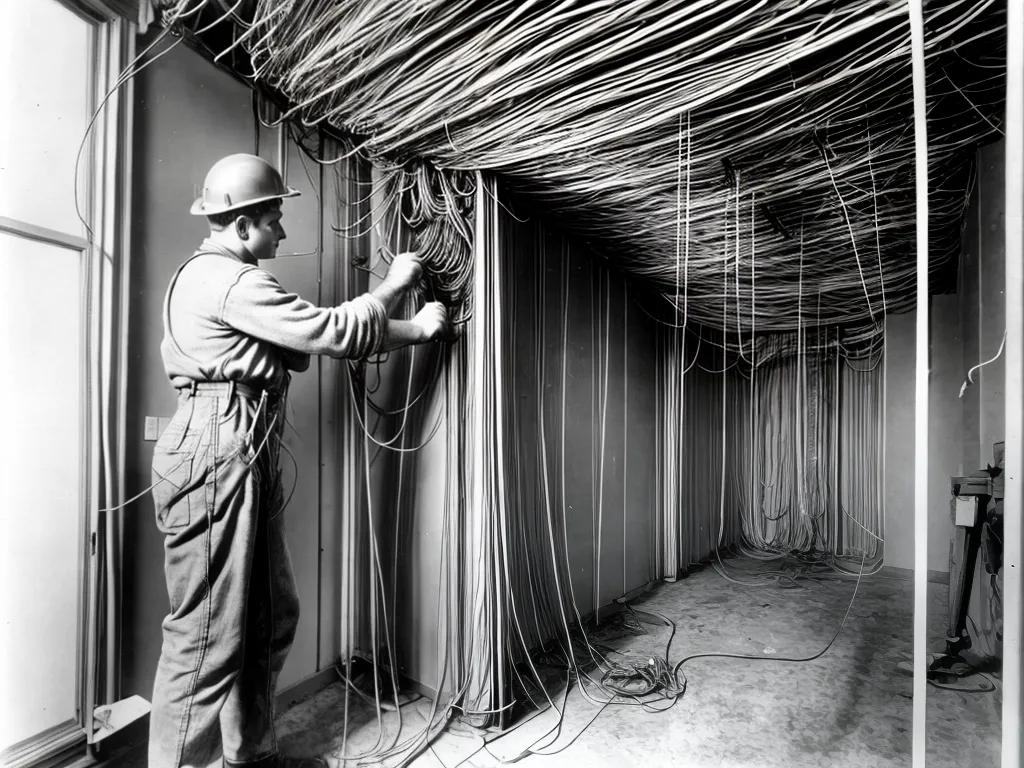
When electricity first came into widespread use in the late 19th century, insulating materials had not yet been developed to cover electrical wires. This meant that early electricians had to find creative ways to safely string electrical wires across cities and into buildings.
The Dangers of Bare Wires
Early electrical systems used direct current (DC) to transmit electricity from power plants to end users. DC current flows continuously in a single direction, as opposed to alternating current (AC) which switches direction periodically. While less versatile than AC, DC was simpler to generate in the early days of electricity.
However, DC current has a major downside - if bare wires carrying DC touch each other, the current will flow between them, creating a short circuit. This can generate a large amount of heat very quickly, potentially starting a fire or damaging equipment. Even brief contact between wires can cause sparks and electrical arcs.
In addition, bare wires left exposed allowed people to accidentally touch live wires and get shocked or electrocuted. This made stringing bare wires through populated areas extremely hazardous. Early electricians had to find ways to prevent wires from touching and isolate them from accidental contact.
Spacing Wires Far Apart
One of the earliest methods for preventing shorts and contact between wires was simply spacing them very far apart, typically at least 8-12 inches.
Wires were strung through cities on poles, with crossbeams holding each wire spaced widely apart. Glass or ceramic insulators pinned the wires in place at regular intervals. Where wires had to cross paths, one set was placed higher than the other to prevent contact.
Spacing wires far apart worked well for overhead lines out in the open. However, it was more difficult to implement this spacing inside the walls of buildings. Wires had to be run vertically through multiple floors, in tight spaces with little room between. This led to the development of other solutions.
Rubber and Cloth Insulation
While proper spacing prevented shorts, it did not protect people from accidentally touching live wires. An insulation material was needed to fully cover the wires.
After much experimentation, rubber proved to be an effective electrical insulator. In the 1880s, methods were developed to vulcanize rubber into a durable coating that could be applied around wires. Cotton or cloth tapes treated with rubber cement were also wrapped around wires.
Insulating the wires prevented accidental contact and made it much safer to route wiring through populated buildings. It allowed wires to be placed closer together without risk of shorts.
However, rubber insulation had some disadvantages. It dried out and cracked over time, requiring replacement. It also provided no protection from moisture or heat. Better materials were soon developed.
Modern Insulators - Porcelain, Plastics, and More
By the early 1900s, superior wire insulators became available:
-
Porcelain insulators proved extremely durable and long-lasting. Porcelain resisted heat and moisture, and lasted for decades.
-
Plastics like PVC were lighter than rubber and did not dry out or decay over time. Different plastics offered various advantages.
-
Fiber materials like cloth tapes gave way to modern polymer and silicone insulations.
-
Varnishes and waxes provided thin but effective coating options.
With insulated wires, electricians could run cables in close proximity without shorts. Insulation made indoor wiring completely safe from accidental contact. This drove rapid growth in electrification indoors and across cities.
While early electricians found creative solutions, modern wire insulations propelled electricity into wide use. Their insulating materials made our electrical world possible.